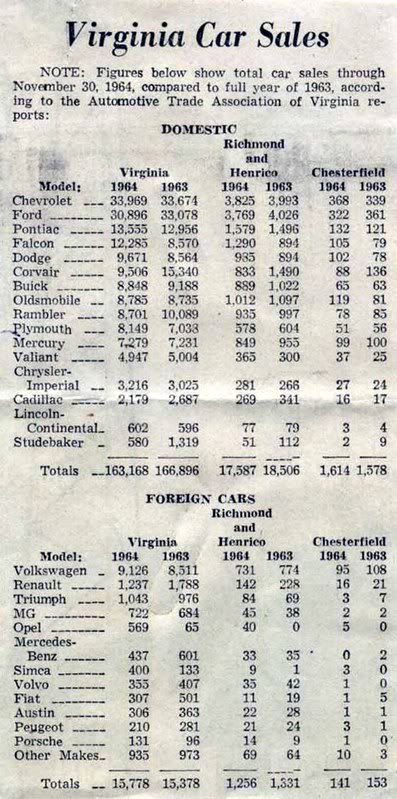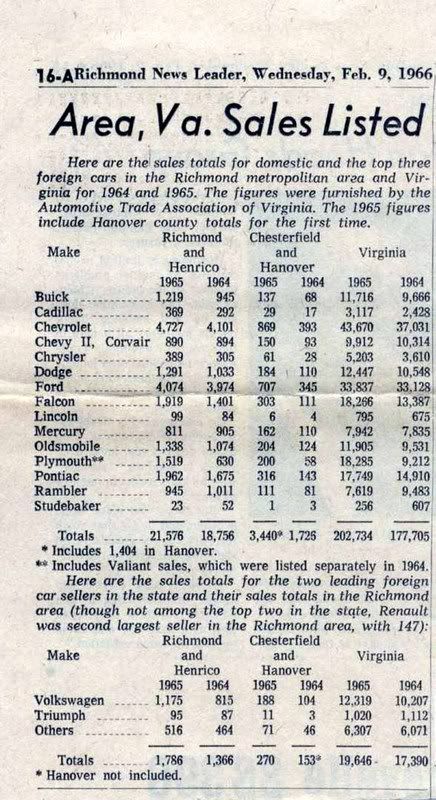 Actually, Bob, I think the Avanti comes close to proving the point you are making. True, it was not a low-price sporty car. However, it was a terrific image-builder that had the potential to make Studebaker money while helping derail the company's stodgy image.
Actually, Bob, I think the Avanti comes close to proving the point you are making. True, it was not a low-price sporty car. However, it was a terrific image-builder that had the potential to make Studebaker money while helping derail the company's stodgy image.But the product wasn't available when it needed to be available.
To wit: The Avanti entered a profitable arena, a market served by these cars, with their 1963 reported production numbers rounded to the nearest thousand (not including convertibles where applicable, since the Avanti wasn't offered as a convertible):
Ford Thunderbird: 57,000
Buick Riviera: 40,000
Pontiac Grand Prix: 73,000
Chrysler 300: 10,000
Chevrolet Corvette Sting-Ray: 11,000
That's a market of roughly 191,000 cars, into which another 3,834 1963 Avantis were added. How many more Avantis could have been sold in that market, with attendant profit and image for Studebaker, had they been available?
This thread has pointed out how many people bought Mustangs because they were generally available on introduction day. Sure, the dealers got list or better for those cars, and the lines and lists became long for additional production, but they did get 'em cranked out in a more-or-less timely manner, something Studebaker just couldn't get going with the Avanti.
Meanwhile, the up-scale customer to whom the Avanti was targeted was not used to being put off with repeated delivery delays and promises, so we have heard from time to time how many Avanti orders were cancelled by potential customers...after all, "Dr. Black's new Riviera looks pretty nice down at the country club, and since that hick Studebaker dealer just put me off another three weeks on the Avanti I ordered two months ago..."

 [V]
[V]So, Bob, while the Avanti and Mustang weren't competitors, I believe the Avanti validates your postulation: Studebaker was just barely viable enough to bring to market a car with the potential "wow" of the Mustang...and in fact did, in the Avanti. That the Avanti didn't do what Sherwood Egbert hoped it could or would may be credited to the same ambitious production gremlins that had haunted Preston Tucker only 15 years earlier, to put it in historical perspective. [:0]

 BP
BP














Comment